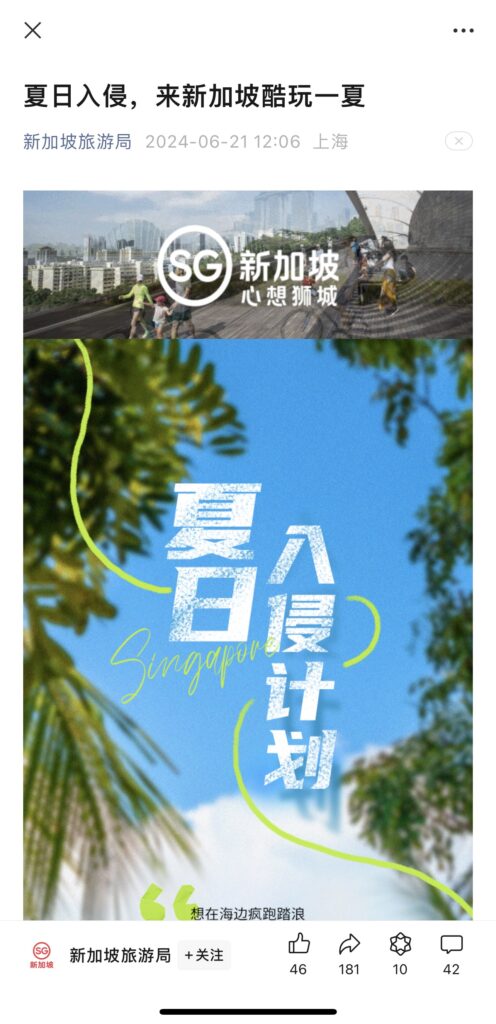As the world emerges from the constraints of the pandemic, the China’s outbound tourism market is poised for a remarkable resurgence in 2024. To capitalize on this revitalized market, destinations and tourism providers must deploy targeted marketing campaigns that resonate with the evolving preferences and behaviors of Chinese travelers.

Understanding the Changing Landscape of China’s Outbound Tourism
The prolonged period of travel limitations has not only created a substantial pent-up demand. It has also catalyzed a shift in their travel preferences. The pre-pandemic era was marked by a focus on group tours and packaged experiences. While the post-pandemic landscape is witnessing a growing preference for more personalized and independent travel.
Chinese tourists are now seeking out unique, immersive, and sustainable travel experiences. It should allow them to delve deeper into local cultures and forge meaningful connections. This evolution in preferences presents a prime opportunity for destinations and tourism providers. It means they must tailor their marketing efforts to cater to the changing needs of this dynamic market.
Leveraging Digital Platforms and Social Media
To effectively reach and engage with Chinese tourists, destination marketers must leverage the power of digital platforms and social medias. These channels have become increasingly dominant in the travel planning and decision-making process for Chinese consumers.
For instance, platforms like WeChat, Weibo, and Xiaohongshu (Little Red Book) have become essential touchpoints for Chinese travelers. By maintaining an active presence on these platforms, destinations can tap into the vast user base. Furthermore leverage influential social media influencers to amplify their marketing messages.
One successful example is the tourism board of Singapore. They has established a strong presence on WeChat by regularly updating its followers with destination highlights, upcoming events, and exclusive offers. This strategy has helped the city-state maintain its relevance and appeal among Chinese tourists.


Personalized and Targeted Content
To capture the attention of Chinese travelers, destination marketers must create personalized and targeted content. And the content should resonate with their preferences and interests. This involves segmenting the Chinese market and tailoring the messaging, imagery, and offers to specific target groups.
For instance, destinations can create content that caters to the interests of different age groups. For example, millennials seek unique experiences or families looking for child-friendly activities. By providing content that addresses the specific needs and desires of these segments, destinations can effectively position themselves as the ideal choice for Chinese tourists.
Leveraging Partnerships and Collaborations
Collaborating with key industry players in China can significantly enhance the reach and effectiveness of destination campaigns. Partnerships with Chinese travel agencies, online platforms, and social media influencers can provide valuable access to the Chinese consumer base. And these are also their preferred channels.
For instance, destinations can collaborate with popular online travel agencies (OTAs) in China, such as Ctrip or Fliggy, to create exclusive packages and offers tailored to the preferences of Chinese tourists. This not only increases the visibility of the destination but also provides a seamless booking experience for Chinese travelers.
Furthermore, partnerships with Chinese social media influencers can help destinations amplify their marketing messages and reach a wider audience. By leveraging the trust and credibility of these influential figures, destinations can effectively showcase their unique offerings and appeal to the aspirations of Chinese consumers.
Embracing Sustainability and Responsible Travel
As Chinese tourists become increasingly conscious of the environmental impact of their travels, destination marketers must incorporate sustainability and responsible travel narratives into their marketing campaigns.
By highlighting the eco-friendly initiatives, conservation efforts, and sustainable practices of the destination, marketers can appeal to the growing demand for environmentally conscious travel experiences among Chinese consumers. This can include showcasing the destination’s commitment to reducing carbon footprints, preserving natural habitats, and supporting local communities.
Adaptability and Agility for China’s Outbound Tourism
In the ever-evolving travel landscape, destination marketers must cultivate a mindset of adaptability and agility to remain relevant and responsive to the changing needs of Chinese tourists.
This may involve regularly monitoring and adjusting marketing strategies, content, and channels to align with the latest trends and consumer preferences. By staying attuned to the shifting behaviors and expectations of Chinese travelers, destinations can fine-tune their marketing efforts to capture their attention and drive bookings.

As the world welcomes the return of Chinese travelers, destination marketers must seize the opportunities presented by the resurgence of China’s outbound tourism market. By deploying targeted marketing campaigns that leverage digital platforms, personalized content, strategic partnerships, and sustainability narratives, destinations can effectively position themselves as the preferred choice for Chinese tourists in 2024 and beyond.
By adapting to the evolving landscape and catering to the changing preferences of Chinese consumers, the tourism industry can unlock the vast potential of this dynamic and influential market, paving the way for a remarkable comeback in the post-pandemic era. And if you are looking for a local digital marketing agency for support, please contact Deep Digital China.
